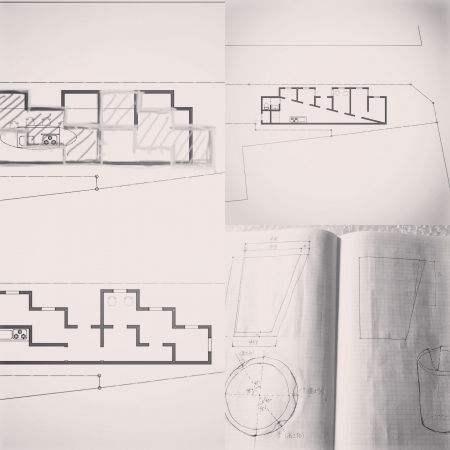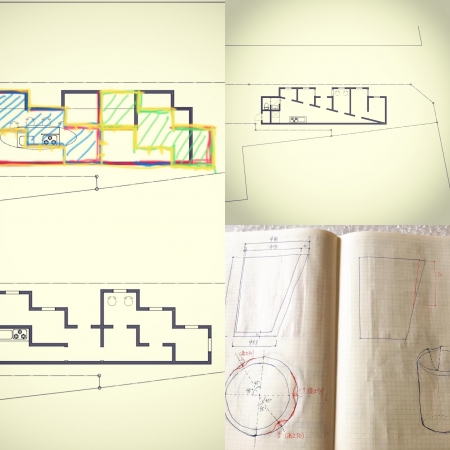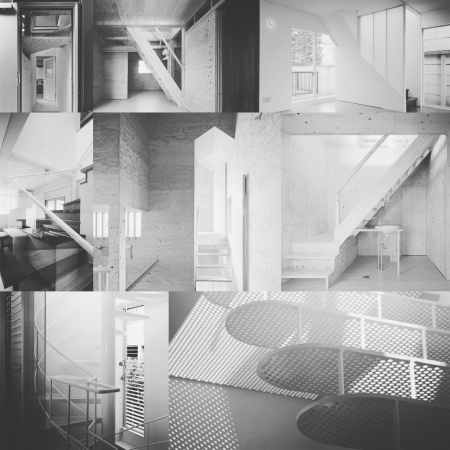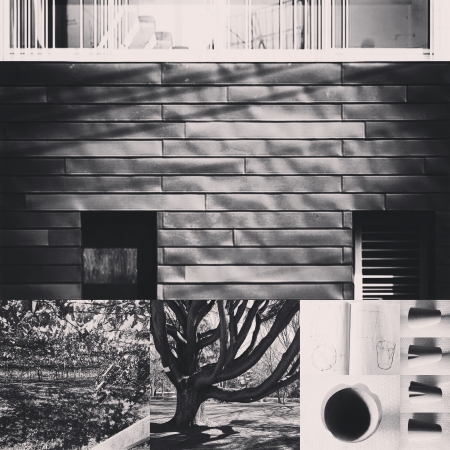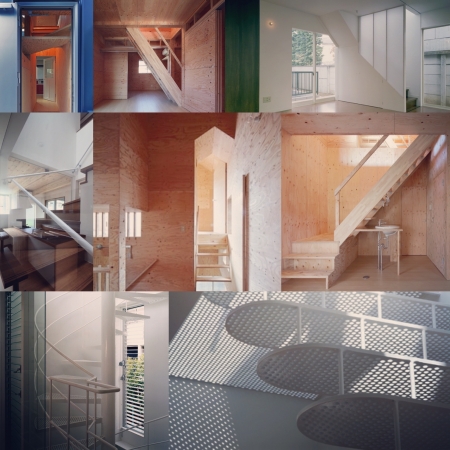タイル張りなのにタイル張りに見えない。前川國男の打ち込みタイルにはいつもハッとしてしまう。よくある通常のタイル張りの外壁は正直好きではない。重厚さが出るような厚みのあるタイルを使い、端部やコーナー部の納まりも詳細につめて精緻につくり込むことができればいいのだが、そこまでいいタイルを使い施工できている建築はほとんど見ない、それほど安直なタイル張りが多い。
打ち込みタイルは通常のタイル張りとは施工方法が違う。そこにひとつタイル張りに見えない所以があるのだろう。もちろん、見た目で違いがわかるのだから、通常のタイル張りに見えないのは当たり前なのだが、関心があるのは同じ素材を使ってもつくり方を変えれば見え方が変わる所である。
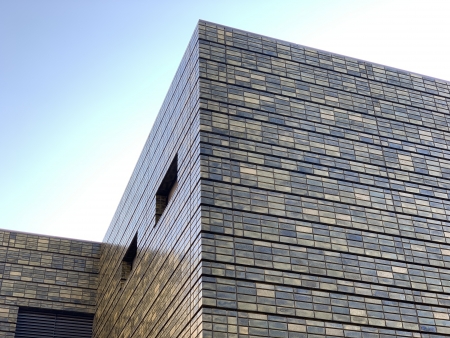
見え方をコントロールしようとする時、見えているそのもののデザインや素材に焦点を当てることが多いが、つくり方を変えるだけで見え方をコントロールできるとなれば、見え方のデザインにより可能性を感じることができる。
"Just change the way you make it"
It's tiled, but it doesn't look like tiled. Kunio Maekawa's driving tiles are always a surprise. I honestly don't like the usual tiled exterior walls that are common. It would be nice if we could use thick tiles that would give a heavy impression, and make the edges and corners fit in detail, but we can see most of the buildings that can be constructed using such good tiles. No, there are many tiles that are so easy.
The construction method of driving tiles is different from that of normal tiles. There may be one reason why it doesn't look like tile. Of course, it's natural that it doesn't look like normal tiles because you can tell the difference by appearance, but what I'm interested in is that even if you use the same material, the appearance will change if you change the way you make it.
When trying to control the appearance, we often focus on the design and material of what we see, but if we can control the appearance just by changing the way we make it, we feel the possibility of designing the appearance. be able to.


